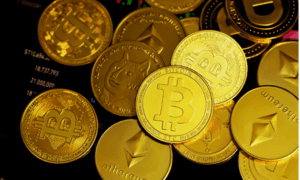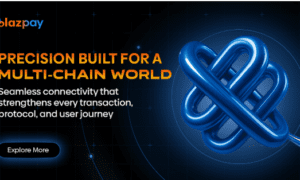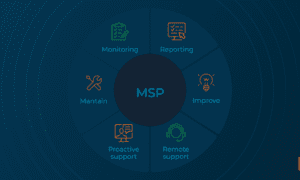In the age of globalization, international payments have emerged as a vital component of personal finance, cross-border trade, digital freelancing, and global investment. Whether you’re a company paying overseas suppliers, a remote worker receiving foreign income, or an individual sending money to family abroad, international payments shape the flow of money across the globe.
This article explores the intricacies of international payments, highlights the latest trends, and provides guidance on selecting the right solutions. With the keyword “international payments” at the core, this in-depth article is crafted for SEO value and practical relevance.
What Are International Payments?
International payments refer to financial transactions where the sender and recipient are located in different countries. These payments can involve individuals, corporations, or government institutions and usually involve currency conversion, banking intermediaries, and compliance with local and international regulations.
In simplest terms, international payments enable the transfer of money across borders, making it possible to conduct global trade, send remittances, and support international investments and partnerships.
The Core Components of International Payments
To better understand how international payments work, it’s essential to examine the major components that make these transactions possible:
- Currency Exchange: Since most countries use their own currencies, international payments often require foreign exchange services to convert one currency into another.
- Banking Infrastructure: Most international transactions are routed through the SWIFT network, which facilitates secure communication between banks.
- Payment Gateways and Providers: Platforms like Wise, Western Union, Payoneer, and PayPal have made it easier to send and receive international payments outside traditional banking methods.
- Regulatory Compliance: All transactions must comply with anti-money laundering (AML) rules, sanctions, tax laws, and know-your-customer (KYC) protocols.
Key Use Cases for International Payments
1. Global Trade and E-commerce
Companies involved in importing and exporting depend heavily on international payments to settle transactions with suppliers or customers overseas.
2. Freelance and Remote Work
Freelancers and digital nomads often receive payments from clients in other countries. Platforms like PayPal and Payoneer simplify this process, allowing for timely and low-cost cross-border payments.
3. Education and Tuition Payments
Many students studying abroad rely on international payments to receive tuition fees, living allowances, and other necessary funds from their families back home.
4. Remittances
Migrant workers regularly send money home, and remittance flows contribute significantly to the GDPs of several developing countries.
5. Overseas Investments
International real estate, stock markets, and cryptocurrency investments often require seamless international payment capabilities.
Methods of International Payments
The way money moves across borders has changed dramatically with the rise of digital solutions. Here are the primary methods:
Bank Transfers
Traditional and widely accepted, bank transfers use SWIFT codes and IBANs for secure communication. However, they can be costly and slow, especially when multiple intermediary banks are involved.
Online Payment Services
PayPal, Wise, and Skrill offer faster, user-friendly options that are especially beneficial for freelancers, small businesses, and online shoppers.
Remittance Companies
Companies like Western Union, MoneyGram, and Remitly specialize in person-to-person transfers and are widely used for family remittances.
Mobile Payment Apps
In certain regions, mobile-based platforms such as Alipay, WeChat Pay, and M-Pesa allow users to send and receive funds internationally via smartphones.
Blockchain and Cryptocurrencies
Blockchain technology enables decentralized and secure international payments without relying on banks. Platforms like Ripple, Stellar, and Bitcoin offer real-time global transactions with minimal fees.
Factors to Consider When Making International Payments
Before choosing a method, several factors should be considered:
- Fees and Charges: Different services apply various fees, including transfer fees, foreign exchange margins, and intermediary bank costs.
- Speed of Transfer: Some services offer same-day transfers, while others may take several business days.
- Exchange Rates: The rate you receive significantly impacts the final amount delivered.
- Security: Choose providers with robust encryption, fraud detection, and a good reputation.
- Regulatory Requirements: Ensure both sender and receiver meet compliance obligations to avoid blocked or delayed transfers.
The Cost Structure of International Payments
One of the most important considerations in cross-border payments is cost. Understanding the breakdown can help avoid hidden charges:
- Transfer Fees: Charged by banks or payment services, often based on the amount and destination.
- Exchange Rate Margins: A small margin is added to the mid-market exchange rate.
- Intermediary Fees: Especially common in SWIFT transfers, intermediary or correspondent banks may deduct fees during the transaction.
- Receiving Fees: The recipient’s bank may charge to credit the funds.
To reduce costs, consider using fintech services that offer real exchange rates with minimal transfer fees.
Challenges in International Payments
Despite technological advancements, international payments come with challenges:
Currency Fluctuations
Volatile exchange rates can result in financial losses, especially in large transactions.
Transaction Delays
Time zone differences, holidays, and the involvement of multiple banks can delay processing.
Compliance Hurdles
Strict regulations on money laundering, fraud prevention, and sanctions can block or freeze payments if documentation is inadequate.
Accessibility Issues
Not all countries or regions have access to modern financial systems, limiting payment options.
Compliance and Security in International Payments
International payments must meet legal requirements in both the sender’s and receiver’s jurisdictions. Key regulatory frameworks include:
- Anti-Money Laundering (AML) Laws
- Know Your Customer (KYC) Requirements
- Sanctions Screening (e.g., OFAC and UN sanctions lists)
- Data Protection Laws (e.g., GDPR)
Secure payment services use tools like encryption, authentication, and fraud detection to protect customer information and funds. Choosing a licensed and regulated provider is essential for peace of mind.
The Role of Fintech in Revolutionizing International Payments
Fintech companies have introduced transformative solutions that address the inefficiencies of traditional banking. These platforms offer:
- Lower transfer costs
- Faster settlement times
- Transparent exchange rates
- User-friendly apps and APIs
Some notable fintechs include:
- Wise (TransferWise): Known for real exchange rates and low fees
- Payoneer: Popular among freelancers and e-commerce sellers
- Revolut: Offers multi-currency accounts and virtual cards
- Stripe: Enables global payment processing for online businesses
Blockchain and the Future of International Payments
Blockchain technology is poised to redefine the global payment landscape. Benefits include:
- Decentralization: Eliminates the need for intermediaries
- Security: Tamper-proof transactions verified by multiple nodes
- Transparency: Every transaction is recorded on a public ledger
- Speed: Transfers can occur within seconds
Blockchain-based systems like RippleNet and Stellar enable real-time global payments, offering alternatives to the traditional SWIFT network.
Central Bank Digital Currencies (CBDCs)
CBDCs are state-issued digital currencies backed by central banks. Countries like China (Digital Yuan) and Sweden (e-krona) are already testing them. CBDCs could offer:
- Instant cross-border transactions
- Greater transparency
- Lower transaction costs
- Improved monetary control
While still in early stages, CBDCs represent the next frontier of international payments.
How to Choose the Right International Payment Provider
When selecting a provider, consider the following checklist:
- Does it support your target countries and currencies?
- What are the total fees, including exchange rate margins?
- How long will the transfer take?
- Is the provider licensed and regulated?
- Does it offer customer support in your region?
- Are there user reviews or ratings available?
Always conduct a small test transfer before committing to large transactions.
Best Practices for Sending and Receiving International Payments
- Double-check Recipient Details: Errors can cause significant delays or failed transactions.
- Use Strong Passwords and Authentication: Secure your account against unauthorized access.
- Track Transfers: Choose providers that allow real-time tracking.
- Understand Local Rules: Some countries impose limits or require documentation for international receipts.
- Plan for Delays: Don’t rely on instant transfers for urgent needs unless guaranteed by the service.
Conclusion
International payments are the foundation of modern global commerce and personal finance. As borders continue to blur in the digital age, the need for efficient, secure, and cost-effective payment solutions becomes more urgent than ever.
From traditional wire transfers to innovative blockchain platforms, the tools for sending and receiving money across borders have evolved dramatically. However, the complexity of international transactions still requires careful planning, awareness of fees and regulations, and the selection of reliable service providers.
By understanding the ecosystem of international payments, individuals and businesses can avoid pitfalls, save money, and ensure that their cross-border transactions are smooth, legal, and secure.



































